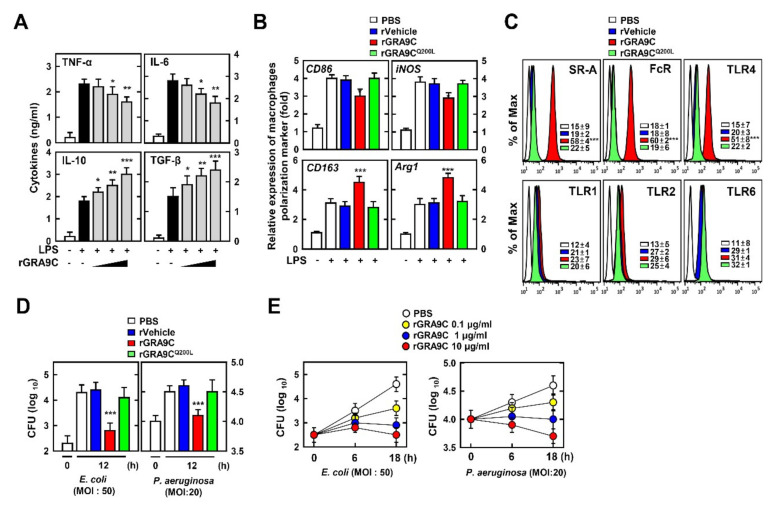Figure 5.
rGRA9C enhances anti-inflammation and bactericidal effect via M1 to M2 polarization. (A) BMDMs were primed with LPS (100 ng mL−1) and stimulated with rGRA9C at various concentrations (0.1, 1, or 10 μg/mL), followed by analysis of the level of cytokines is analyzed by ELISA for TNF-α, IL-6, IL-10 and TGF-β. (B) BMDMs were primed with LPS (100 ng mL−1) and stimulated with rVehicle, rGRA9C, or rGRA9CQ200L. Macrophage polarization markers in BMDM were measured by quantitative real-time PCR. (C) FACS analysis for SR-A, FcR, TLR4, TLR1, TLR2, and TLR6 from BMDMs. (D) BMDM were infected with E. coli (MOI = 50) or P. aeruginosa (MOI = 20) for 4 h and stimulated with rVehicle, rGRA9C, or rGRA9CQ200L (1 μg/mL) for 12 h. BMDMs were lysed to determine intracellular bacterial loads. (E) BMDM were infected with E. coli (MOI = 50) or P. aeruginosa (MOI = 20) for 4 h and stimulated with PBS, or rGRA9C at various concentrations for indicated times. BMDMs are lysed to determine intracellular bacterial loads. The data are representative of four independent experiments with similar results (A–E). (A,B,D) Significant differences (* p < 0.05; ** p < 0.01; *** p < 0.001) compared with rVehicle-treated BMDMs.

